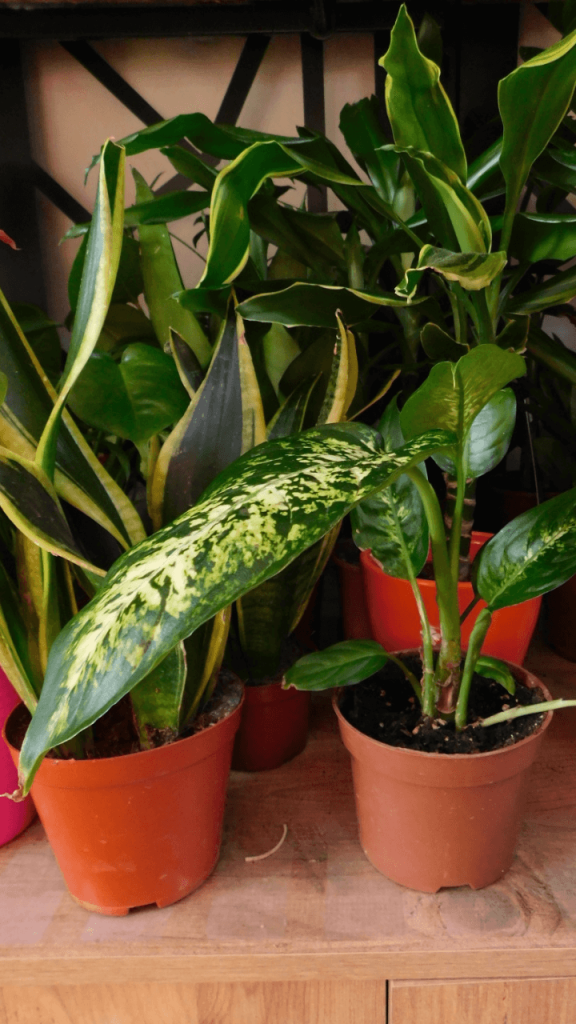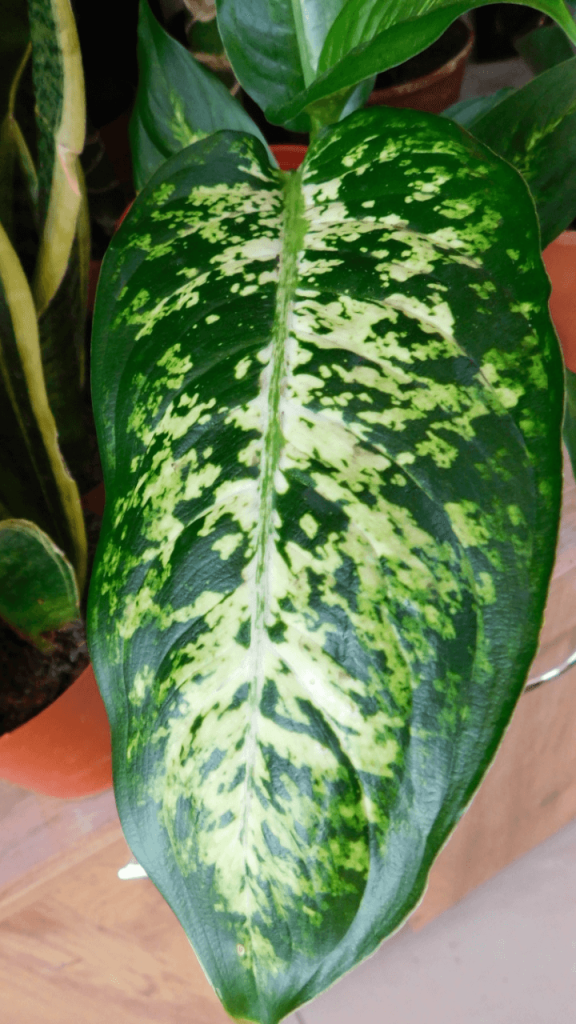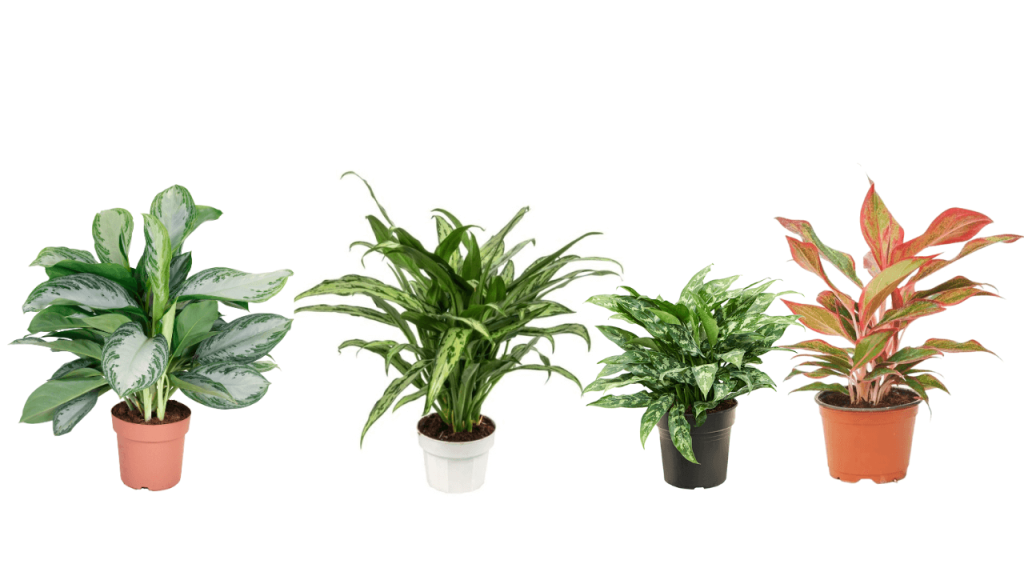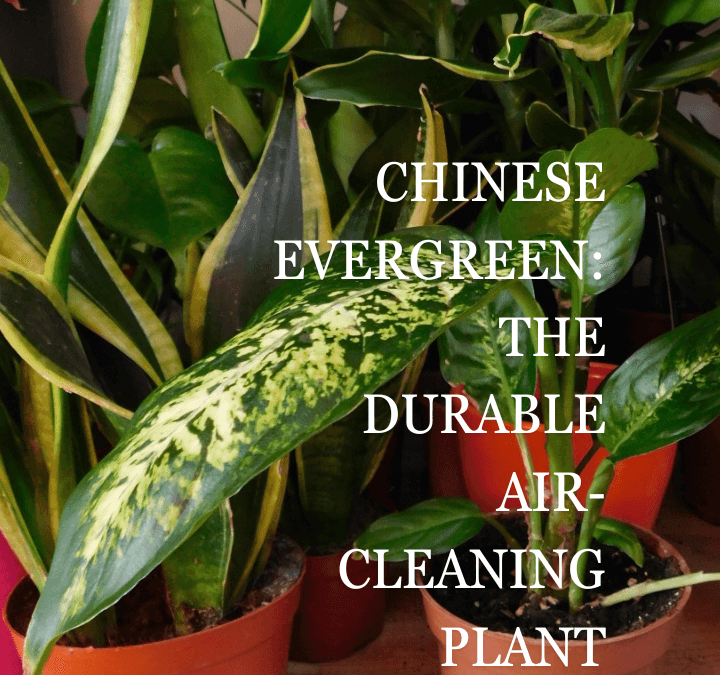The Chinese Evergreen, or Aglaonema, stands out as a favored indoor plant due to its stunning foliage and easy care. Its leaves display a beautiful mix of greens, often highlighted with touches of white, yellow, or pink, creating eye-catching patterns that bring a touch of calm elegance to any room. This plant is exceptionally hardy and adaptable, thriving in low-light conditions where other plants might struggle. Originating from the understory of tropical and subtropical forests in Asia and New Guinea, it’s accustomed to growing in the filtered light of dense forests, making it ideal for those less sunny spots in your home or office.
You only need to water it when the soil’s top inch dries out, making it an ideal choice for beginners or those with busy schedules. Besides its visual appeal, the Chinese Evergreen purifies the air naturally, eliminating toxins and promoting a healthier living environment.
Its lush appearance and low maintenance make the Chinese Evergreen a perfect way to bring a touch of nature’s tranquility indoors. It suits both experienced plant enthusiasts and those new to indoor gardening, wonderfully enhancing any room’s decor and air quality.
Air-cleaning Properties of Chinese Evergreen

One of the notable advantages of Chinese Evergreen (Aglaonema) lies in its remarkable ability to purify the air, making it an invaluable asset for indoor environments. This resilient plant demonstrates exceptional proficiency in removing common household toxins, including formaldehyde, benzene, and trichloroethylene. These substances are frequently emitted by various household items such as cleaning products, furniture, and carpets.
The air-cleansing prowess of this plant stems from its remarkable capability to actively eliminate these harmful toxins from the surrounding atmosphere and transform them into harmless compounds. Through a process called phytoremediation, this remarkable plant effectively absorbs pollutants via its leaves and roots, subsequently breaking them down into harmless substances.
Not only does Chinese Evergreen excel in purifying the air, but it also acts as an efficient oxygen generator, contributing to enhanced oxygen levels in your home or office. This augmentation in oxygen content not only improves overall air quality but also fosters a healthier and more invigorating living environment.
Beyond its air-purifying attributes, Chinese Evergreen bestows additional health benefits. Studies have shown that this resilient plant has a positive impact on reducing stress and anxiety levels, instilling a sense of tranquility and relaxation within the spaces it inhabits.
How to Care for Chinese Evergreen
Aglaonema is indeed an excellent choice for both beginners and those leading busy lifestyles, thanks to its low-maintenance nature. Here are some valuable tips to consider for nurturing your Chinese Evergreen:
- Light: Chinese Evergreen thrives in bright, indirect light, although it also exhibits adaptability to low light conditions. To avoid leaf scorching, it is advisable to shield it from direct sunlight.
- Watering: Monitor the soil moisture and water your Chinese Evergreen when the top inch of soil feels dry to the touch. Overwatering should be avoided, as it can lead to root rot and negatively impact the plant’s health.
- Soil: Chinese Evergreen prefers soil that is moist yet well-drained. Opt for high-quality potting soil and ensure the pot has adequate drainage to prevent waterlogging.
- Temperature and Humidity: Chinese Evergreen is most comfortable within a temperature range of 60-85°F (16-29°C) and moderate to high humidity levels. Enhance humidity by placing a water-filled tray near the plant or misting its leaves with water.
- Fertilizer: Chinese Evergreen does not demand frequent fertilization. During the growing season (spring and summer), a balanced, all-purpose fertilizer can be applied every 2-3 months.
- Pruning: Pruning requirements for Chinese Evergreen are minimal. Remove any yellow or brown leaves as necessary and trim back overgrown stems to maintain its desired shape.
- Propagation: Chinese Evergreen can be propagated through stem cuttings or division. Stem cuttings can be taken during the spring or summer, which can then be rooted in water or moist soil. Division is another viable option when the plant outgrows its current pot.
Varieties of Chinese Evergreen

This plant is indeed a diverse plant, offering a wide range of colors, shapes, and sizes that effortlessly complement various decor styles. Here are some of the most sought-after varieties of Aglaonema:
- Silver Bay: Renowned for its breathtaking silver-green leaves with contrasting dark green edges, Silver Bay is a medium-sized Chinese Evergreen that can reach a height of up to 3 feet. Its elegant foliage adds a touch of sophistication to any setting.
- Maria: With its broad and glossy leaves adorned by striking white veins, Maria is a compact Chinese Evergreen variety that stands at around 2 feet tall. Its distinct appearance adds a touch of refinement to any space.
- Cutlass: Offering a distinctive appearance reminiscent of swords, Cutlass features long and narrow leaves with silver markings against a backdrop of dark green. This unique Chinese Evergreen variety reaches a height of about 2 feet.
- Red Siam: For a vibrant burst of color, Red Siam is an ideal choice. Its deep green leaves are accentuated by striking red veins, creating an eye-catching display. Red Siam can grow up to 3 feet tall, making it a captivating focal point.
- Golden Bay: If you’re seeking a touch of radiance, Golden Bay is a variegated Chinese Evergreen with green leaves adorned by golden-yellow markings. Reaching heights of up to 3 feet, it brings warmth and brightness to any room.
- Camouflage: Embrace a textured look with Camouflage, a unique Chinese Evergreen variety. Its green leaves feature irregular patches of silver and white, adding depth and interest to your space. Camouflage typically grows to a height of 2 feet.

Common Problems and Solutions of Chinese Evergreen
The Chinese Evergreen, while notably hardy and adaptable, can occasionally encounter a few common issues that might concern plant owners. One of the most prevalent problems is overwatering, which can lead to root rot—a condition characterized by brown, mushy roots and a general decline in plant health. To prevent this, ensure the plant is potted in well-draining soil and that you allow the top inch of soil to dry out before watering again.
Another challenge is pest infestations, with mealybugs and spider mites being the usual culprits. These pests can be spotted as tiny white or red specks on the leaves or stems, often accompanied by webbing or a sticky residue. Combat these pests by wiping the leaves with a solution of mild soap and water or using neem oil, a natural insecticide that is safe for plants.
Additionally, can suffer from leaf discoloration, with leaves turning yellow or brown. This can be a sign of several issues, including poor water quality, excessive direct sunlight, or nutrient deficiencies. If tap water is high in chemicals like fluoride or chlorine, consider switching to filtered or distilled water. Protect the plant from direct sunlight by placing it in a spot with filtered, indirect light to prevent leaf burn. If the issue is nutritional, a balanced, water-soluble fertilizer applied every few months can help replenish essential nutrients.
Another problem is low humidity, which can cause the leaf edges to brown and crisp. As tropical plants thrive in higher-humidity environments. You can increase humidity around your plant by using a pebble tray filled with water, placing a humidifier nearby, or grouping it with other plants to create a microclimate with higher moisture levels.
Conclusion
The Chinese Evergreen, with its stunning foliage in a variety of colors and patterns, thrives under low light conditions, making it perfect for seasoned plant enthusiasts and those new to indoor gardening alike. Its straightforward care requirements and air-purifying capabilities make the Chinese Evergreen an ideal choice for enhancing the air quality and aesthetic appeal of our homes and offices.
Furthermore, the adaptability of the Chinese Evergreen to decor allows it to seamlessly fit into various styles, from modern minimalist to eclectic spaces. Whether it serves as a statement piece in a living room, adds a refreshing touch to a bathroom, or offers a calming presence in an office, the brings a piece of nature indoors, creating a more inviting and serene atmosphere.
Understanding and tackling common issues like overwatering, pest infestations, or environmental stress is crucial for the health and beauty of any plant. However, with a bit of care and attention, you can easily manage these challenges, allowing you to thrive and continue to add joy and tranquility to your life.
FAQ About Chinese Evergreen
Signs of excessive light include faded, scorched, or bleached leaves. For optimal air purification, keep your Chinese Evergreen in bright, indirect light away from direct sun exposure.
To expand your air-purifying plant collection, propagate Chinese Evergreens by division or stem cuttings. This allows you to increase your home’s greenery and enhance the overall air quality.
Increase humidity around your Chinese Evergreen by using a pebble tray with water, grouping it with other plants, or employing a humidifier, thereby enhancing its air-purifying efficiency in your indoor environment.

